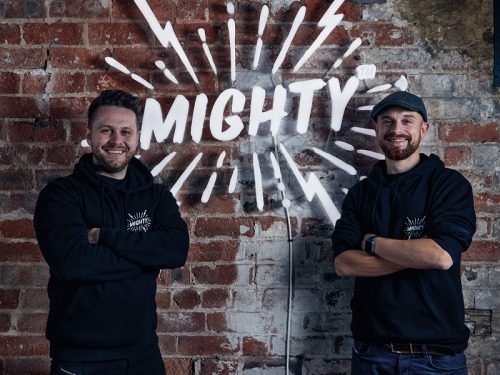How to Help Your Back Pain (Especially if You Sit All Day)
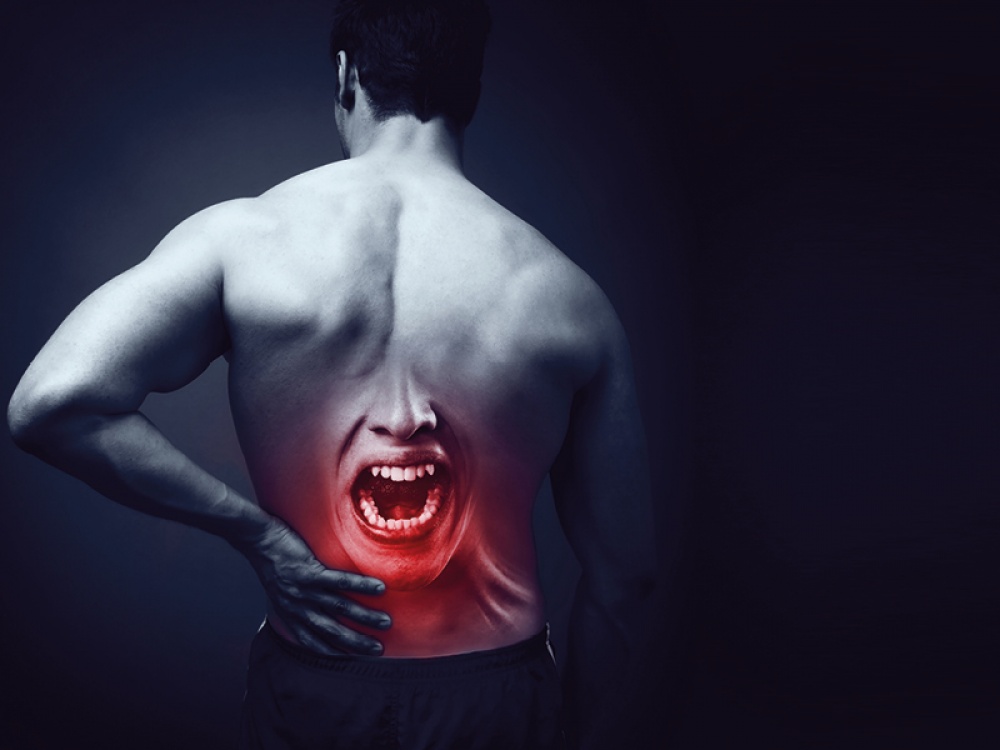
Here’s a bit of a spine-tingling fact for you: back pain affects an estimated 18 million people across the UK every year
Back pain is one of the biggest causes of work absence worldwide, accounting for more than 12 million days lost every year. Whether it’s just an annoying tweak, or something more debilitating that impacts your everyday life, before seeking help on how to improve any issues with your back, you must firstly try and assess why your back is hurting in the first place.
Much of it has to do with a more sedentary lifestyle. The old maxim of use it or lose it really does apply. Too many of us sit all day, rarely working out, and wonder why our bodies complain when we ask so much of them. Anyone who sits at a desk all day will often also have tight muscles in their chest, pulling their head and shoulders forward and putting more strain on the back.
While perhaps the most obvious answer to many back problems could be bad posture, there are actually other environmental factors that we wouldn’t expect at play. Emotional stress and a poor diet have a detriamental effect on our bodies, making them much more vulnerable to ill health and injury.
Up to 50 percent of musculoskeletal illnesses are tied to a stress-related disorder. Put simply, the physical pain we experience is often a tangible manifestation of emotional pain that we can’t see, a bodily response that has been hard-wired into humans since prehistoric times. We are not about to be attacked by a ferocious animal, but the same physical, muscle-tensing reaction occurs when we’re faced with everyday issues which trigger a stress response.
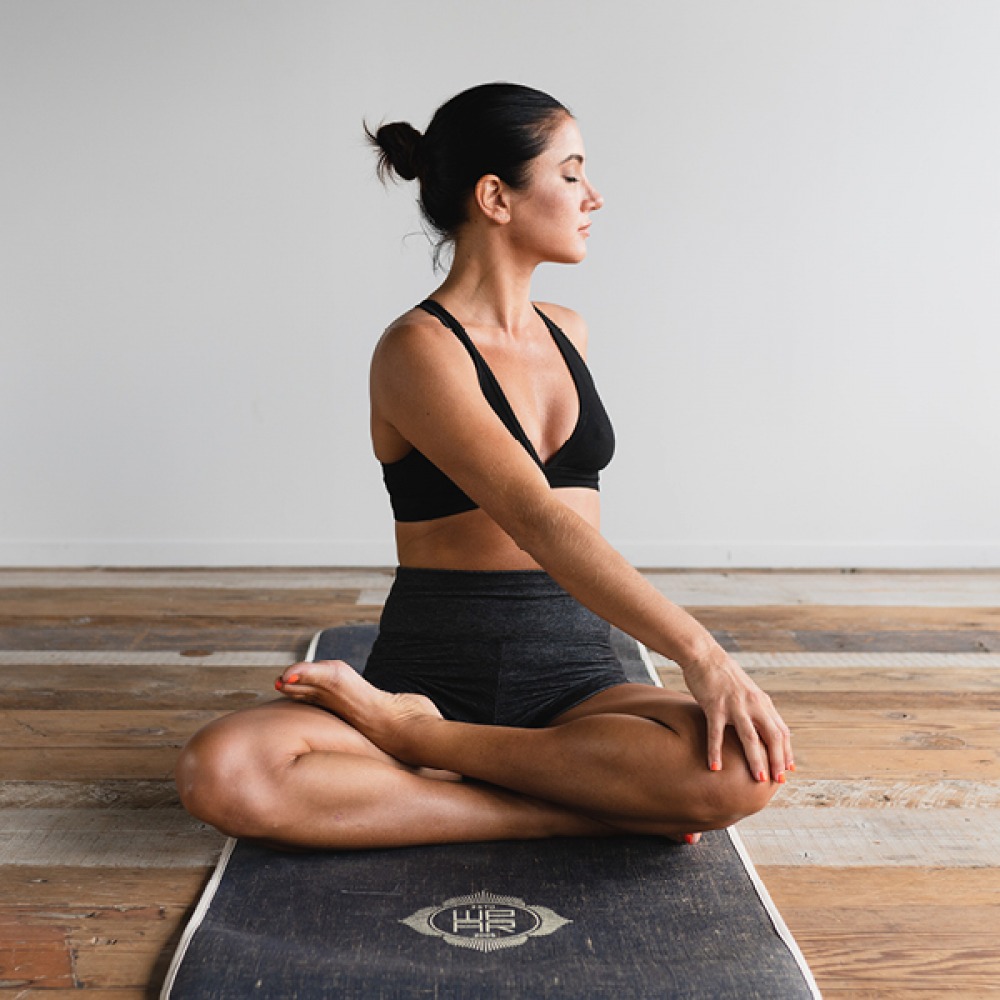
Read More: How Four Rugby Players Became Newcastle Beer Brewers
We can of course all pump ourselves full of anti-inflammatory painkillers such as ibuprofen to alleviate the pain. Chronic back pain keeps the pharmaceutical companies that produce over-the-counter painkillers in business – but it’s having seriously damaging consequences for our already severely-underfunded NHS, costing them a billion pounds per year. Whilst new legislation looks to stop routine scanning for lower back pain on the NHS, it won’t stop the demand for help with back pain. So what can we do to help ourselves?
Pilates plays a key role in rehabilitation programmes and is great in helping to improve back and neck problems, but what is pilates? It an exercise that relies on strengthening the core muscles which stabilise the torso, bringing the body back into alignment. Pilates helps to build strength without adding bulk, balancing strength with flexibility.
Yoga is more focused on stretching. If you are quite stiff, which a lot of people are, yoga may be better because there are more elements of stretching, but yoga doesn’t strengthen the core in the same way as pilates. Once the core muscles and the key postural muscles are strong, that just takes the pressure off everything. Stretching alone can’t do that.
There is an important problem which faces even the most physically fit and perfectly-postured of us… age. Problems with backs become more prominent as we get older. After the age of 40 there’s a natural decline in strength and flexibility in the muscles at the rate of around 0.5 percent per year. This is not inevitable though, as you can counteract some of this ageing effect by exercising regularly and addressing your diet.
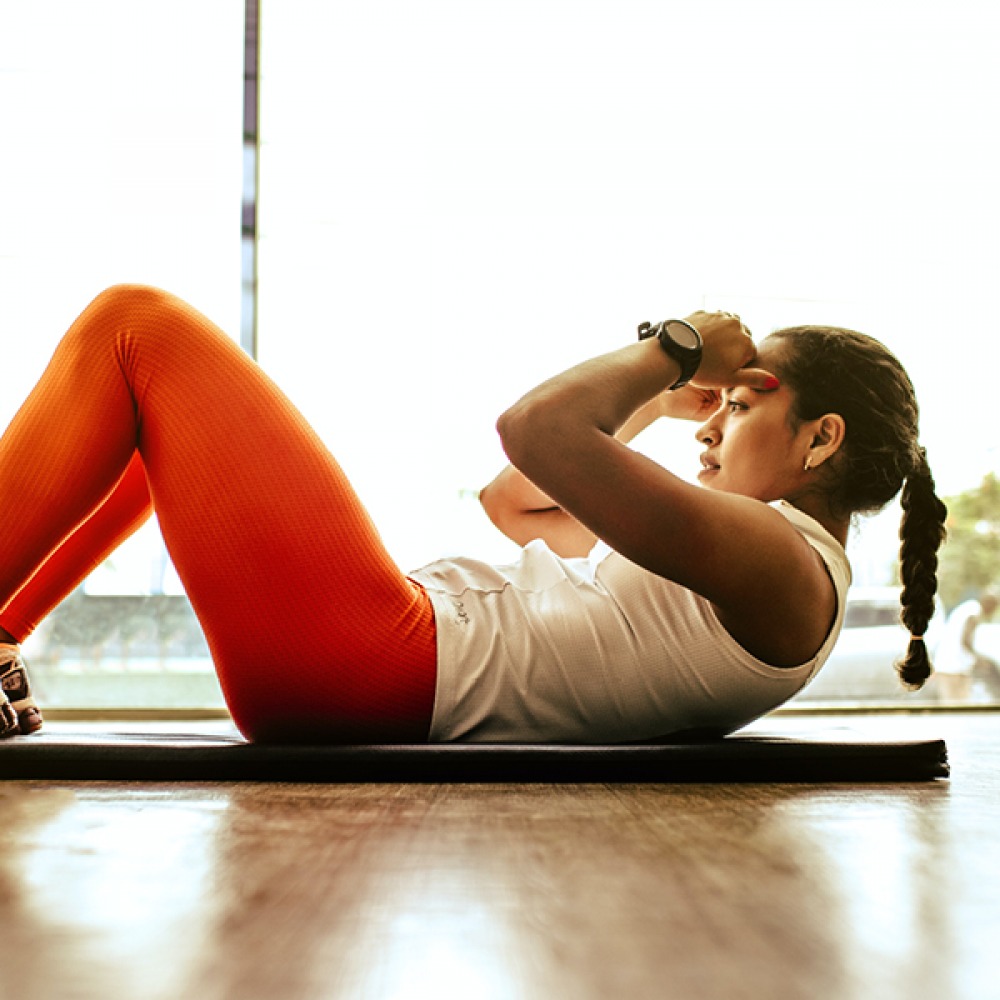
Backs For The Future
There are some simple guidelines you can follow to help alleviate some of the pain and symptoms associated with a bad back
Exercise is key but any exercises, whether aerobic, core strengthening or stretching, should be tailored to your specific symptoms. It is important to keep moving (the once-prescribed bed rest for a bad back is no longer the best advice). Research shows those who stay active recover more quickly, so try and take (gentle) regular exercise but avoid any which is high impact. Walking, swimming, pilates and yoga are all good.
Constant, nagging pain is draining and you need to manage the frustration, irritability and other psychological problems which can arise from being in pain and having restricted movement. Consider meditation and mindfulness to help get you through difficult periods. Breathing exercises are also recommended for reducing stress levels and it is important to stay positive to help your recovery.
Be more aware of your posture when standing and sitting. Aim to keep your head centred over your pelvis and don’t slouch your shoulders or push your chin forward which puts additional strain on your back. If you do work at a desk rest your arms evenly on the desk and keep your eyes level with the top of the screen to stop yourself hunching over. It’s also important to get up and walk about at very regular intervals.
Read More: Meet the World-Renowned Entrepreneur and ‘Queen of Happiness’ from Newcastle
Some diets are particularly bad as they are highly inflammatory, especially those high in trans-fats, sugar and processed foods. If you are overweight you are also naturally putting more pressure on your spine, so it is important to keep to a healthy weight if you can.
Research also suggests that if you smoke your are up to four times more likely to suffer from a degenerative disk or other spinal issues than non-smokers – so stop!
Consider taking supplements which may help. Vitamin D is important for bone health, and many of us are lacking in this vital vitamin. A magnesium deficiency may lead to muscle weakness and cramp, and taking turmeric can help reduce inflammation.
It’s always useful to note those activities which worsen the pain. Listen to your body and take more time over simple things such as lifting or carrying the shopping if you need to. Stop if you have to, but a better understanding of what hurts should help you understand the root cause of your back problem.
Hot (hot wheat bag or a hot bath), and cold treatments (an ice pack) may help reduce swelling and improve movement. Alternating between the two often has a beneficial effect in easing pain.
Back to Basics
Alternative treatments such as seeing a chiropractic can help alleviate chronic back pain. Although not widely available on the NHS, it’s worth seeking out a specialist. We talk to Luke Ramsay of Luke Ramsay Chiropractic & Laser in Gosforth to find out why you should consider seeing a chiropractor, and (note to self) it’s not just for your back
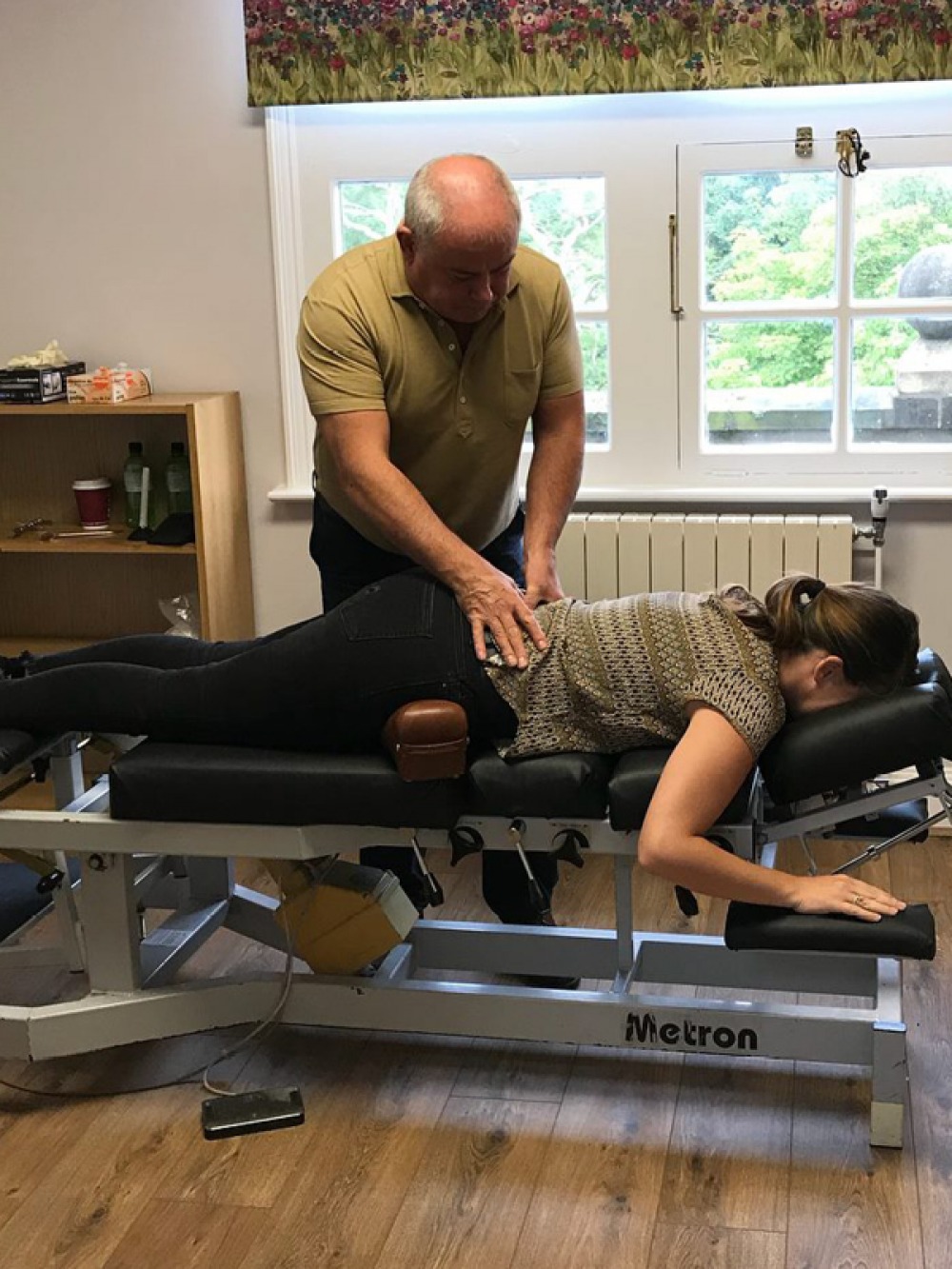
Read More: How NUVO Health are Using the Power of Plants to Support People in their Daily Lives
Why should someone consider going to a chiropractor?
When the general public think of a chiropractor they generally think ‘back pain’, however, we treat a whole host of other symptoms. Chiropractors treat problems with the body’s structure – 80 percent of the nerves in the body are automatic. It’s this system which makes all your organs work automatically, but when the system is impacted by a structural problem such as bad posture or a trauma, this can affect on your overall health, not just your back health.
The main reason anyone visits a chiropractor is unresolved pain. So many people believe that their pain is superficial and/or muscular, so they ignore it or try other remedies. Muscular pain would usually stop after two to five days, but a structural problem will continue and often causes referred pain somewhere else in the body. The vast majority of our patients have exhausted pain management before seeing us. If your car had an oil warning light (AKA your pain) and instead of changing the oil you just turned off the warning light (took painkillers), your car could only last so long before you broke down. The body is much the same: pain management can only take you so far.
With chiropractic management you don’t always have treatment where it ‘hurts’. We look at the body as a complete picture, not just the symptoms you present with. So for example, someone might have had a fall and recover but be left with a twist in their pelvis. Their body, to compensate for this twist, has had to make their their spine move differently, throwing their shoulder out of line which has started to cause them shoulder pain. This is the main reason why I say that chiropractors have to look at the entire body, as so often symptoms may be a compensation and not the actual root cause of the problem.
Read More: Five Action-Packed Sports Podcasts to Keep You Up to Date
The most common conditions chiropractors are called upon to treat include back pain, neck pain, sciatica, migraines and extremity problems such as shoulders, knees and elbows, and chiropractic treatment involves adjustments which are normally high velocity, low amplitude thrusts to restore movement to joints that are blocked. A chiropractor will also look at lifestyle and advise on diet, sleep, exercise and hydration which are all factors in health, and mental health could also be impacting on their pain.
What’s your background?
I opened my first clinic in Whitley Bay in 1987. I went on to have numerous other clinics in the area, including Cramlington and Monkseaton, but moved abroad in 2006 to Tenerife, where I went on to teach undergraduates in Madrid and Barcelona universities.
I have been the chiropractor for the Whitley Warriors and Newcastle Vipers Ice Hockey teams and twice went to the world championships with the British Ice Hockey Team. In 2001 I became a fellow of the Royal College of Chiropractors and a Board Certified Craniopath. I returned to Newcastle in 2019 and have my clinic in Gosforth, but I still teach post graduates across Europe and have a protocol which I have developed in the diagnosis and treatment of disc herniations which I have taught internationally. I probably see more herniated discs than other chiropractors because of my experience, and clients are often referred to me from other chiropractors as I’m a specialist in that area.
Read More: Behind the Scenes of Robson Green's New BBC Show with Local Famous Faces
Why is your approach different to what people might expect?
Most people are surprised by how gentle treatment is. In the clinic I use a special table to do a technique called ‘flexion-distraction’ which decompresses disc herniations, and another gentle technique called SOT (Sacro Occipital Technique).
I have also introduced special software which captures a client’s exact posture misalignments. It’s an amazing tool for patients to visually see what’s wrong. We then give you specific tailored exercises for your condition, so right from the beginning you can be helping yourself at home.
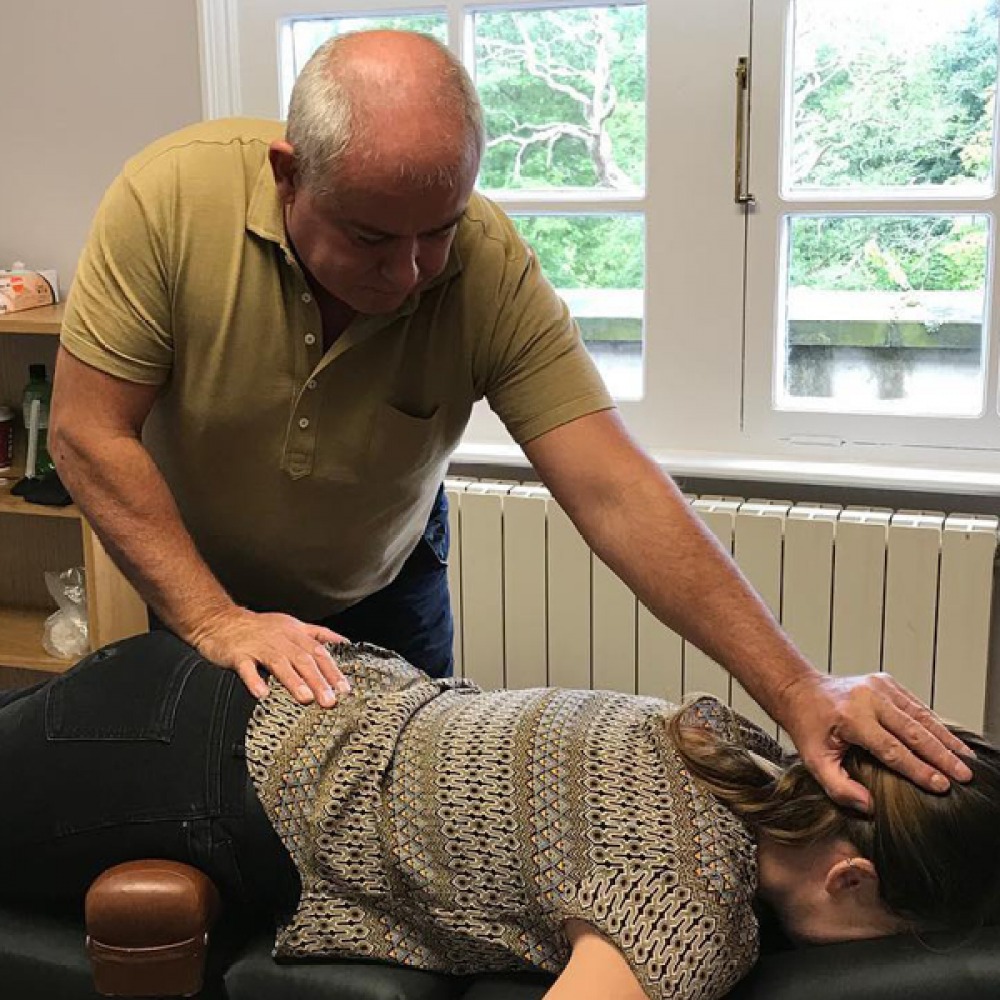
Who benefits from SOT?
Sacro Occipital Technique, as the name suggests, is treating the sacrum (the base of your spine) and the occiput (the top of your spine) because there is a membrane connecting the two called the dura. The same fluid that goes round your spinal cord goes around your brain, that is why to check for meningitis you have a spinal tap.
SOT is gentle and benefits patients with chiropractic conditions but without hard manipulation, making it suitable for all ages, including babies. Chiropractic care for babies is less about pain management and more about the health of the nervous system. Even a natural birth can be traumatic and intervention like forceps and suction can cause problems with the baby’s upper neck, affecting the brain stem. The most common reason babies have been brought to me in the past are colic and glue ear. But I see a lot of babies with ‘flat heads’, more common than ever because of babies sleeping on their back. Importantly, with cranial treatments their head can be made symmetrical again, as recent studies have shown that misshapen heads can cause cognitive development delays and affect coordination and balance in later years.
If I were to book an appointment, what could I expect?
We take a case history, which includes all the history of your condition, past operations and medical history. We then do orthopaedic and neurological tests to help with the diagnosis. Sometimes it may be decided an X-ray or MRI would be beneficial – but not in all cases. We normally encourage patients to bring any previous results including any scans if they have them. Sometimes after examination we might recommend our cold laser, either combined with chiropractic or instead of. By combining both treatments we have seen great results in some extremely difficult and painful conditions.
What exactly is cold laser?
The cold laser machine can treat people with inflammatory conditions such as tendonitis, plantar fasciitis, frozen shoulder and osteoarthritis. It can also be used on patients with skin conditions like diabetic ulcers, fractures where casts cannot be used and inflammatory conditions not appropriate for chiropractic care.
In terms of expectations, from a chiropractic perspective, is there anything you can’t effectively treat?
Chiropractors have so much training, not just to treat structural problems, but also to know when NOT to treat and refer patients to other healthcare professionals. For example, a severally herniated disc pressing on the base of the spinal cord called Cauda Equina is classed as a surgical emergency and a patient would be advised instantly to seek surgical intervention (I have seen three in the past 18 months!).
Other common conditions which patients may come with and we cannot treat are severe inflammatory autoimmune conditions like rheumatoid arthritis and severe osteoarthritis.




